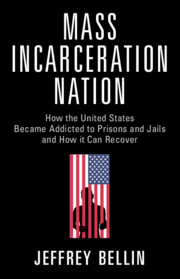 Mass Incarceration Nation
Mass Incarceration Nation Book contents
- Mass Incarceration Nation
- Mass Incarceration Nation
- Copyright page
- Contents
- Figures
- Tables
- Acknowledgments
- Introduction
- Part I What Is Mass Incarceration?
- Part II The Building Blocks of Mass Incarceration
- Part III The Mechanics of Mass Incarceration
- Part IV The Road to Recovery
- 18 What Success Looks Like
- 19 (Mostly) Abolish the Feds
- 20 Less Crime, Part 1
- 21 Less Crime, Part 2
- 22 Reducing Admissions and Shortening Stays
- Conclusion
- Notes
- Index
20 - Less Crime, Part 1
Changing the Rules
from Part IV - The Road to Recovery
Published online by Cambridge University Press: 03 November 2022
- Mass Incarceration Nation
- Mass Incarceration Nation
- Copyright page
- Contents
- Figures
- Tables
- Acknowledgments
- Introduction
- Part I What Is Mass Incarceration?
- Part II The Building Blocks of Mass Incarceration
- Part III The Mechanics of Mass Incarceration
- Part IV The Road to Recovery
- 18 What Success Looks Like
- 19 (Mostly) Abolish the Feds
- 20 Less Crime, Part 1
- 21 Less Crime, Part 2
- 22 Reducing Admissions and Shortening Stays
- Conclusion
- Notes
- Index
Summary
One of the easiest ways to reduce crime is to shrink the footprint of the criminal law. The most obvious candidates are the parts of the criminal infrastructure that I have been calling the criminal legal system: pretrial detention, the war on drugs, parole and probation revocations, repeat offending laws, and so on. The best way to shrink the criminal legal system is to change the law so that violations of essentially regulatory rules do not lead to incarceration.
- Type
- Chapter
- Information
- Mass Incarceration NationHow the United States Became Addicted to Prisons and Jails and How It Can Recover, pp. 175 - 178Publisher: Cambridge University PressPrint publication year: 2022
